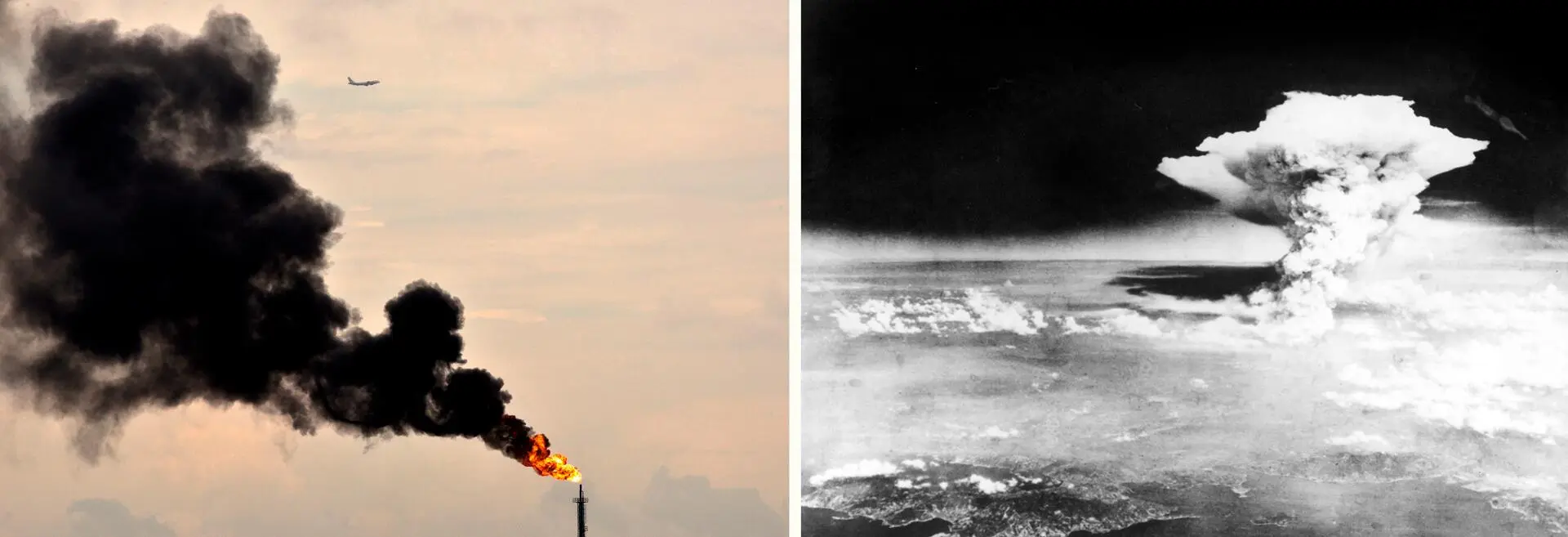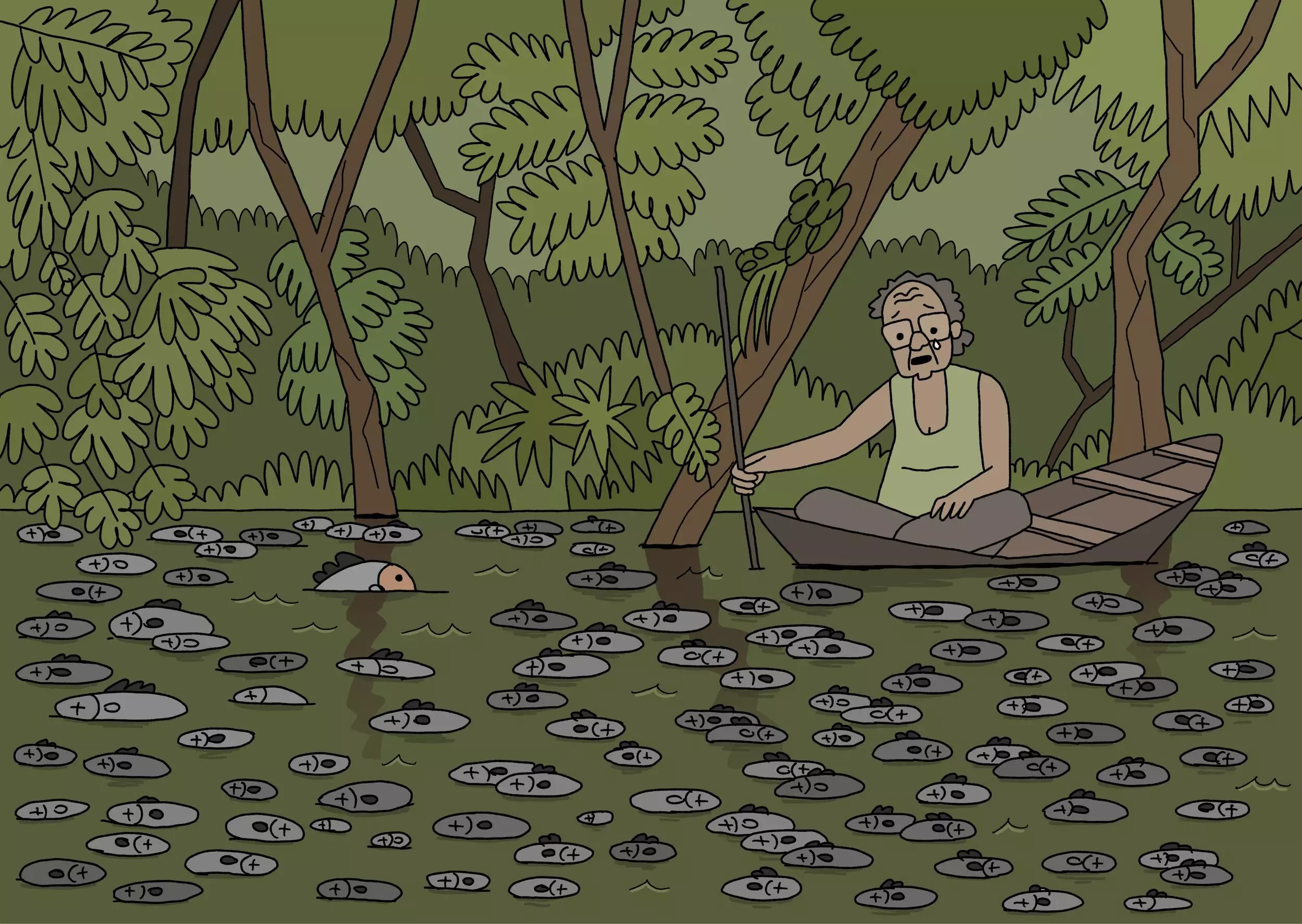Imagine you are a rock. Any rock. Perhaps a boulder on the edge of an Amazon river, or a pebble in the Sahara desert, or a stone on the slopes of a Himalayan mountain. Go back into the deep memory of that rock, formed over millions or billions of years, pushed this way and that by floods, earthquakes, volcanoes and landslides, then left motionless in one place – maybe deep underground or at the bottom of the ocean – for decades or centuries or millennia. Put all of that – the history of the Earth – in your mind and then consider a single question: what is the significance of the human race?
That is the essence of a fierce global debate that erupted into the public realm last week when a panel of planetary historians, also known as geologists, refused to accept the Earth has entered a new human-dominated epoch called the Anthropocene. From the perspective of the Amazon rainforest, this example of human-centrism is both absurdly comical and deadly serious.
It is funny because, as any rock can tell you, homo sapiens are newcomers to our 4.5 billion-year-old home planet. If you squeezed all of Earth’s history into one calendar year, the oldest rocks discovered at Earth’s surface would date from mid-March. Very primitive life forms would emerge in late November. Dinosaurs would become dominant in mid-December (the Triassic period) and disappear the day after Christmas. The Amazon rainforest would start to form the following day, 27 December. The first human ancestors would not appear until the evening of December 31. Our grandparents would not be born until the last second of New Year’s Eve. All of which is to say that in the epic story of the world, a human life is less than a hiccup, a burp, or a fart. How can we be so hubristic as to give our name to an entire geological period? The very idea is enough to make a stone roll around in mirth.
And yet, there is a serious reason why the Nobel-winning chemist Paul Creutzen first suggested the concept just over two decades ago. He could see that since the industrial revolution, we have done so much damage to our home planet that the impact will last for thousands of years. As a result, he said, the world is leaving the stable epoch of the Holocene and entering the Anthropocene (the epoch of the humans).
There is no shortage of evidence. Since 1850, human burning of fossil fuels such as oil, gas and coal has put more carbon dioxide in the air than at any time in the past 400,000 years. This has pushed global temperatures up to levels not seen in 120,000 years, which is changing the way the Earth looks from space. On current trends, by 2050 there will be no summer ice in the Arctic for the first time in at least 5,000 years.

An oil refinery and an atomic bomb (Hiroshima, 1945): fossil fuels and nuclear power plants create waste that lasts for hundreds or thousands of years. Photos: Yamil Lage and Roger Viollet/AFP
The most rapid change began in the 1950s, which some scientists say should be considered the start of the anthropocene. It was then that the United States and the Soviet Union started testing thermonuclear hydrogen bombs, which left radioisotopes like plutonium and strontium in soils, sediments and trees around the planet, as well as in the teeth of children in affected areas. Every day of every year, the world’s 413 nuclear power stations produce radioactive waste that take tens of thousands of years to reach a safe level. In some cases, it can be a million years – truly a geological timeframe.
Since the 1950s, human factories have also produced more than 8 billion tons of plastics, which never fully decompose; they just break down over decades into smaller and smaller particles that are now found everywhere from the world’s deepest point – the Mariana Trench – to its highest, the Himalayas, as well as in the placentas of unborn babies and the bodies of whales. There are also thousands of different types of PFAS (which stands for per- and polyfluoroalkyl substances) that are known as “forever chemicals,” because they are almost indestructible. These teflon-like chemicals, which repel water and grease, are found in clothes, packaging, smart phones – and now waterways, farm fields and human bodies. They do not break down for thousands of years and can become toxic as they accumulate.
And then, of course, there are the shifts in the planet’s biology, which are ignored by geologists at their peril. Earth System Science – otherwise known as Gaia Theory – teaches us that life, rocks and atmosphere are interconnected and interdependent. Without these vital relationships, the Earth would be just one more giant lifeless rock spinning around the sun. But this equilibrium is shifting. Since 1750, the human population has increased tenfold. Wildlife populations have declined by about 70% in the past 50 years alone.
This will dramatically change the fossil record of the planet. The weight of domestic terrestrial animals, such as chickens, cows, sheep, goats and pigs is now 30 times greater than wild mammals. When future archeologists look at the bones in landfill sites – and examine the steady destruction of the Amazon and other biomes – they will assume the world was turned into a giant farm from the late 20th century until now. Add to this the fact that miners are also digging up more minerals than ever, which is changing the landscape and the geological strata underground, and even a long-buried rock might start to acknowledge “the era of the humans” is not such a funny idea.

The population of domestic animals, like chickens and cows, accounts for the vast majority of mammals on the Earth: the planet has become one large farm. Photos: Sébastien Salom-Gomis/AFP and Lela Beltrão/SUMAÚMA
This debate is not over, even though the Subcommission on Quaternary Stratigraphy (a time-keeping panel that makes recommendations to the International Geological Congress) voted last month against the adoption of the Anthropocene as a new epoch. There were two main disagreements: First, over the proposed starting point in the 1950s, which would muddy the causes of humanity’s impact by tying it to nuclear weapons, rather than fossil fuels, which started in the 18th century, or land-clearing for agriculture, which began many centuries earlier. And second, over whether the duration was long enough to qualify as an epoch, or might be better described as an “event.” After 15 years of discussion, the margin of defeat was wide: 12 against, four in favour, two abstentions and three absences. Proponents have complained of dirty tricks and vowed to appeal, but geologists are thought unlikely to accept a new epoch any time soon.
What does this mean for the Amazon rainforest and other great centres of more-than-human life?
On a political level, it feels like a gift for those who want to deny humans have a damaging impact on nature. They will try to claim the geologists are on their side, but this is not true. No serious scientist doubts the enormously destabilising impact of industry, forest clearance and monoculture farming. In fact, it can be argued that designating the anthropocene as an event rather than an “epoch” makes it more alarming. Geological events are temporary phenomena that change the Earth system, such as a series of volcanic eruptions, or the Great Oxidation Event that is thought to have wiped out much of life on Earth 2.5 billion years ago.
While the geologists debate seismic change at a glacial pace, we at Sumaúma do not need a panel of faraway experts to tell us the rainforest and its people are under threat from industrialised humanity. Indigenous people have been saying this for decades.
In this edition, reporters Helena Palmquist and Catarina Barbosa investigate accusations that the Norwegian company Norsk Hydro and France’s Imerys are responsible for serious environmental accidents in the Amazonian city of Barcarena, Pará, with terrible consequences for its residents. This hard-hitting report is the second in the Unsustainable series, a partnership between SUMAÚMA and the Transnational Law Institute, at King’s College London. Columnist Sidarta Ribeiro argues that destructive exploitation of people and nature will continue in Latin America until the region frees itself from the death machine of European capitalism and instead embraces its life-affirming.
Afro-Indigenous roots. Catalan writer Gabi Martínez condemns intellectuals in the Spanish speaking world for giving up on nature and urges them to champion more-than-human literature. Amid a surge of violence in Ecuador, Carlos Cedeño and Verónica Intriago explain how drug-trafficking gangs have widened their activities to encompass the illegal gold mining that is destroying the rainforest. From Sumauma’s base in Altamira, we have two superb stories from our Micelium co-formation program: a graphic depiction by river-journalist Sara Lima of the fish traumatised by the Belo Monte dam, and a scathing indictment by Joelmir Silva of the government’s neglect of his riverine community of Maribel.
Sumaúma will continue to look at anthropogenic impacts from a more-than-human perspective. Not just fossils and rocks, but all of life.
Text: Jonathan Watts
Fact-checker: Plínio Lopes
Proofreader (Portuguese): Célia Arruda
Portuguese translation: Denise Bobadilha
Spanish translation: Meritxell Almarza
Photo Editor: Lela Beltrão
Editorial workflow, copy editing and finishing: Viviane Zandonadi
Editor-in-chief: Talita Bedinelli
Editorial director: Eliane Brum

Pacu Seringa, A Cry for Life: a scene from the graphic report on the disruption of the Xingu river by Sara Lima, a Beiradera and a Micélio-SUMAÚMA forest-journalist, illustrated by Pablito Aguiar





